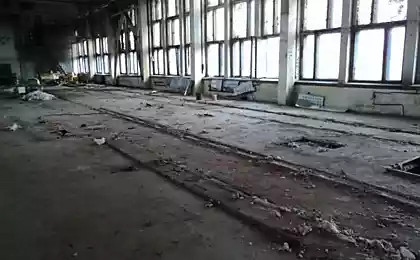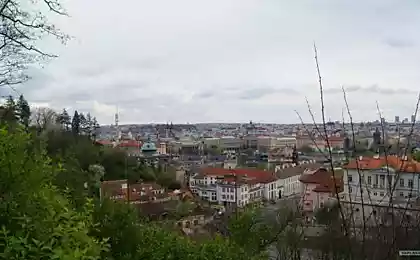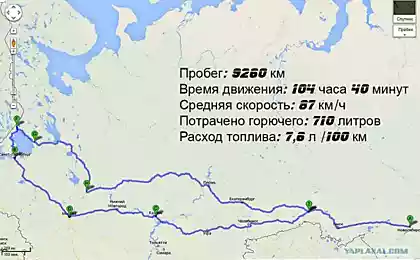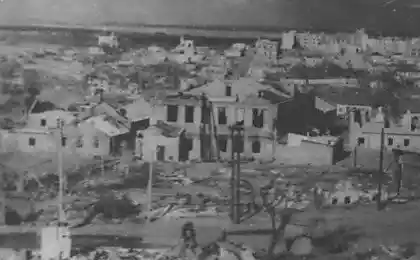672
As you experience the city's geographical position is more important than a hundred years ago

Economic geography — a subfield of Economics, is the study of how people make decisions about their location in space. From the point of view of geography, economists do not study the big picture. As a rule, scientists are exploring a particular industry, cities and historical periods. And then from the set of local findings put the overall picture.
The main object of study of economic geography are the two main driving forces that determine the location of agents in space. This is the transport costs and benefits from agglomeration.
Transport costs — all costs of transportation of goods and ideas on communication at a distance.
The benefits of agglomeration — the factors that motivate people and companies to choose a location close to each other, that is, all benefit from their close geographic proximity.
In the picture of the Earth from space at night shows where electricity is used more and where less. In fact, this is a map of the density of economic activities: the bright spots are areas densely populated by many people with high income. In Europe, people like to live on the coasts. Africa in the picture — very dark: there is, of course, a lot of people, but economic activity as such in monetary terms a little. Very beautiful Russia: a Moscow, St. Petersburg and TRANS-Siberian railway, to the North of it — nothing.

The first thing that catches the eye in this picture, is the extremely uneven distribution of economic activity that is observed at different levels of geographic detail. If we zoom in, we see not only the country but their internal division into rich and poor regions, and then the structure of cities, which is also very uneven. Economic activity and incomes are differently distributed within the city: some industries are concentrated in certain areas, others in others, in some places no companies simply can not be. A good example is Silicon valley: despite the fact that the very large valley and Apple and Hewlett Packard, and Google are in the same small town. Any Bazaar is also an example of concentration because the sellers of tomatoes will be there to stand in the same row, next to each other, and sellers of pickles in the other. A textbook example of such concentration is a street in new York, where the row are floral or bookstores. So the owners of these stores is beneficial to be close.
Causes of concentration of economic activity Why economic activity is distributed so unevenly? First, is the geographical space: ports, rivers, fertile land, and people, of course, be concentrated where they feel good from the point of view of resources. Secondly, man modifies nature, and is building the infrastructure. Subsequently, when agents respond to these changes in terrain and where some are located, it is also leads to various concentrations of economic activity. Economists of the most interesting factors based on agglomeration externalities, when people are encouraged to stay close, regardless of other factors. What is "beneficial to be around"? The first reason is technical. It's simple: the more you market, the greater need, for example, a factory which provides products to the market. And the bigger the plant, the more warehouses are needed. So the benefits of scale lead to concentration of production. The second argument is quite old — even Karl Marx more than a hundred years ago wrote that firms benefit from the common labour market. For example, it's good to be a company in Moscow or St.-Petersburg, the big cities, where it is easy to hire a skilled worker. Same thing with the market of intermediate goods: you can easily find a supplier that fits you. The larger the city, the greater the profit of scale in the production of intermediate goods, i.e. benefit everyone who consumes this product.
A very important thing — self-select. People who don't care and who do not love to work, not going anywhere. Migrants, usually the most active and efficient of the residents of the country. Therefore, people and companies who also move in space, it is better to be in Metropolitan areas. First — because the work there is interesting and profitable, and the second because the frames are there more qualified and motivated. And the most interesting factor is the dissemination of knowledge and technology: when people are near, it is easier to share knowledge. All these reasons have different impacts on different industries. Some industries need to be near the port, the other next to natural resources, there is a third major technology or skilled labor. It is clear that these factors will influence with different strength and at different distances, which are also highly dependent on context.
The interaction of transport costs and benefits arising from agglomeration is observed historically. If we talk about costs, Maritime transport in the XX century, fell three times, air — seven. Prices of telephone service during its existence fell a hundred times, satellite is also rapidly becoming cheaper and this trend will continue. Costs for transportation and communication dropped sharply, from which it is logical to conclude that we are witnessing the "death of distance", which now is not important. Many believe that if the call to another continent to its business partners so easy and cheap, no matter where you are. However, is it true that the geographical location is less important than it was a hundred years ago? On the contrary, now it is much more important. We can measure this with the example of trade. Take a gravity equation, which all took place in the school where the force of attraction between particles or bodies is proportional to their masses and inversely proportional to the distance between them. Alpha, beta and gamma is the exponent (in the normal gravitational equation of alpha and beta equal to one and gamma — two). Now put this physical law on trade flows.


Thus, the flow from region R to region S is proportional to the size of the markets in these two regions (the size of the market, where he goes and where he's going: the more a country is, the more it produces and can export, the more the host country, the more it buys) and inversely proportional to the distance. We want to calculate the gamma factor, which in this formula means that the weight factor of distance in trade. Data on trade flows and GDP will do a little econometrics. Will create a graph where the X — axis is years, from 1880, and the Y — axis the gamma coefficient for different years. It is evident that since 1920-ies range constantly grows and still have not stopped.
The twentieth century has been marked by major trade liberalization: countries had high tariffs, which increased further during the great depression, but after the Second world war, the rates gradually decreased. As we know, transport costs and the cost of communication is also falling, so the sell became easier and cheaper and, consequently, States began to trade with each other. It is noteworthy that trade flows between countries that are close to each other (roughly speaking, all the countries of Europe) has grown much more. That is actually the easier one to trade, the more important the distance.
Consider the process from the point of view of agglomeration. Industrial production, unlike agricultural, more or less mobile from the perspective of geography. Therefore, the industrial revolution divided the country in specialization of what to produce, and, consequently, the level of profit. Many European countries abruptly broke away income per capita from the rest of the world. The leader was United Kingdom: the closer the country was to it the faster it grew in this period, and Vice versa. Rapid urbanization is part of the industrial revolution: workers become more in demand than the peasants. So is changing the structure of the economy: activity is concentrated in cities due to its loss in rural areas. This leads to increased economic activity in the country as a whole. The production of goods with a strong agglomeration effect has led to the fact that large markets have an advantage and began to accumulate the high-tech industry.
Having overcome a certain threshold level of concentration of the economy will begin to decline, but when and where is hard to say because it depends on the country, geography, industry, technological development. Clearly, if we invent a teleporter like in "Star Trek", we really will not care where to be. The real mechanism is that when the industry is highly concentrated in some regions and transportation costs are quite low, it becomes profitable to move production to, for example, in Provence, and from there to carry goods to Paris. It is the outsourcing that we are seeing at the country level and not only. First concentration will be reduced where the costs are minimal. In the United States sprawling agglomeration began in the 1960-ies, when there was motorization of the country and the people became easy to ride for quite long distances. Suburbanization occurs: the line between town and country is erased, and the concentration of people in cities is reduced. In Moscow now it has become fashionable to build a small factory for the production of the simple things somewhere on 101-m kilometre, where wages are much lower than in the Moscow Metropolitan area. So the production process becomes cheaper and is spreading to Moscow oblast. Thus, to get the benefit, many companies need to reduce logistics costs, that is, be in some direct proximity to strategic objects: resources, transportation nodes. In the high-tech sector where knowledge, business practices, know-how, and agglomeration effects operate on a very local level — within a single zip code, that is a small area. The General conclusion of many studies is for this reason that it is important for us to be so close to each other every day to meet face to face. Probably, all the same information is better transmitted through direct communication.
Structure and prospects of development of cities
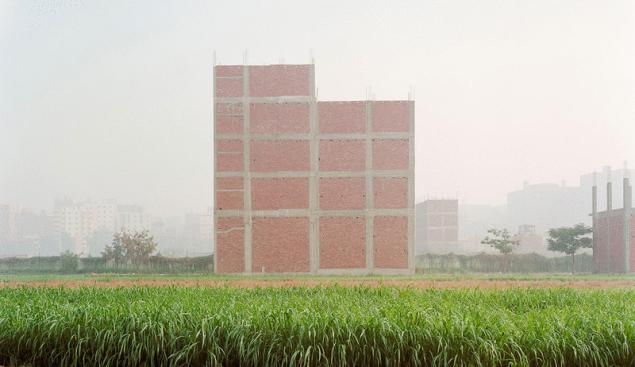
If we talk about the internal structure of cities, you can start with a model of Alonso 1964. Her idea is as follows: if to represent the city as a meeting place of the seller and the buyer, then all the land around this centre will be used most effectively when people are arbitrarily organize themselves into concentric circles. That is, if I sell flowers, I'll grow them close, so they are not bent during transportation. If I had pasture, I don't care where to be, I can from a distance and chasing his cow. A man whose wilting flowers, will be willing to pay more for Central land, and the shepherd better pay less but get more land somewhere on the periphery. So samoogranichitsja land use: the Central circle, so it is denser and the land is more expensive.
Surprisingly, this model is available in almost all cities, including in Paris and new York, but does not work in Moscow, Soviet cities, Johannesburg and Mumbai. In the first the majority of the population lives in the center. And, for example, in Mumbai — two of the transport corridor, and the poor are living very tight and far. In Moscow the population density also increases to the edge, and it happened not because there are more jobs. The Soviet government, defining the historic centre of Moscow, began to build factories on the outskirts. Then, when the space in the centre was not enough, they began to build neighborhoods outside the zone of plants. The same had to be done in St. Petersburg and in virtually every Soviet city.
In the capitalist cities in a period of expansion, when a lot of people willing to buy the property, whose market value is growing, industrial enterprises decide that it is more profitable to sell the land, and gradually move to the suburbs. In Soviet cities such rotation of land use has not occurred because the price of the land was not as such. Along with this strange building from the Soviet Union, we inherited the industrial zone. Stunning fact: within a radius of approximately seven kilometers around 70% of the land is industrial.
In the early 90's redistribution of shrinking jobs in the center happened by itself. For business, as we saw above, to be the center means profit. The redistribution of the housing stock in the centre did not happen for various reasons: administrative and economic.
Traffic problems and economic development the Future of Moscow is largely dependent on transport, in particular, from the management of the current number of cars on which it was not designed. Every morning people living on the outskirts of Moscow, go to work mainly in the center, there is a huge burden on the transport system. The heavier person to get from one end of town to another, the more valuable Central land, where all to get easier. Aggravating the value of Central land.
For example, for Moscow it is very difficult to get: this can only be done in individual intersections with large highways. The cost of the offices is 500 metres from the Moscow ring road two times lower than the cost of the offices inside. But people refuse to take them off, because they simply will not reach their clients. In the US it happened, and we also motorization gradually leads to the fact that cities start to spread, as transport costs of car ownership are reduced. The construction of new roads, increase traffic capacity, public transport motivates people to choose their place of residence and work in the suburbs and beyond.
Even now it is often said that the transport problem can be solved when we create the conditions for a polycentric city centres to workplaces were somewhere on the edge or out of centre. For example, Atlanta is a city of motorists, where everyone has a house with a yard, and people go to work in some kind of a local centre, which is a lot. Traffic flows so the system that Atlanta is hard to create a good network of public transport. So looks like a classic polycentric city.
I doubt that Russian will become polycentric. For this you need to build a secondary center, which would be as attractive as the first. For this you need to try very hard. Moreover, the secondary center should be pretty far away, otherwise he will not be able to compete. Moscow city was built quite close to the Kremlin and, unfortunately, not in a very good location: it is no wonder it was empty, there was industrial area with poor transport accessibility. Another example of a future plan to expand Moscow and the creation of innovation centres SKOLKOVO. To reach it on the metro is impossible, Kutuzov constantly is because of its block, next to the MKAD is also problematic transport accessibility no. I think in this situation, the business will not come back. This is the same story as with business center in Rumyantsevo, which is five hundred meters from the road and not in demand.
The future of Russian cities

Russia, which we received after the collapse of the Soviet Union, is a rather loosely concentrated country. During the whole time the Soviet government tried to spread economic activity more on the territory. But if in France the process may be ended in less-developed countries it still is. This happens in Mexico or in Brazil or in any countries where the level of GDP is now similar to that of Russia. We concentrate back to normal, and this process, of course, will continue.
It is interesting that it happens not evenly, but in the hierarchy of regions and cities. The concentration began with Moscow, it began to grow. With Petersburg it was only in 2000-e years, later. The millionaires are starting to grow now and we will see in the coming decades. At the same time in all regions of the local centres attract population migration and manufacturing, it is, relatively speaking, against the capital of the province. Thus, concentration takes place in regional centers and not in rural areas. Regional centers grow at the expense of small villages.
In addition, because the Soviet Union was not integrated into international trade, and we have now integrated the border areas or areas with good transport links, as Petersburg, it is logical to obtain the advantage relative to the others. But it often interferes with the policy. Border of Vladivostok could strike up a good connection with South East Asia and have all prospects for development. But we want to keep it more integrated into the European part and the rest of Russia.
Source: theoryandpractice.ru
BMW and Volkswagen are challenging Tesla and create a network of charging stations
A neat ornamental garden






